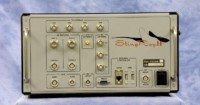
An editorial in The Washington Post takes a look at five possible ways a cell-site simulator could legally be used in a Fourth Amendment search. The first “rule” states that cell-site simulator usage is never a search. “The Fourth Amendment doesn’t apply when you voluntarily disclose information to an undercover government agent.” Also, registration information is voluntarily revealed by the phone to the simulator because the phone is programmed to respond, The Post noted. The second “rule” states that use of a cell-site simulator is only a search when the phone in question is inside a home. If in public, it’s not a search because those in public don’t have the same privacy rights that they do inside their homes under the Fourth Amendment. The third “rule” says cell-site simulator use is a search “only when used in the aggregate over time.” Short-term location surveillance does not constitute a search legally. The fourth rule combines rules one and two. The cell-site simulator use is a search when it reveals someone is both inside a home and over a long period of time. The final “rule” states that cell phones are usually in a “protected” space like a coat pocket or purse, and the government has a right to search those areas to get the phone, so unless the phone is out in the open, the cell-site simulator would be seen as a search in that case.
These rules come into question when talking about a recent case, State v. Andrews. Andrews was charged with attempted first-degree murder for shooting three people, and the police used GPS to find his location after obtaining a court order. His phone’s location pinpointed him within 200 to 1,600 meters. They tracked him down in a house after using a simulator from the brand Hailstorm. After knocking on the door, a woman let them in. Andrews was on the couch with the phone in his pocket. The police got a warrant to search the house, finding a gun in the couch cushions. Was this a Fourth Amendment search when they used Hailstorm to pinpoint the exact cell phone location?
The court said yes. The Post’s editorial notes cell phone users can expect their phones won’t be used as tracking devices, and police must get a search warrant based on probable cause to use technology such as Hailstorm.




Reader Interactions